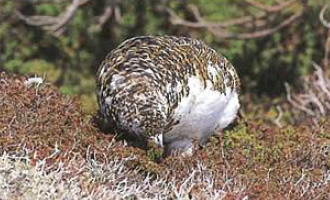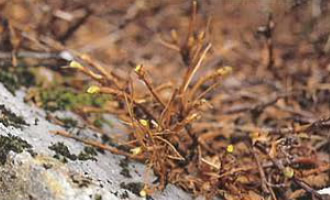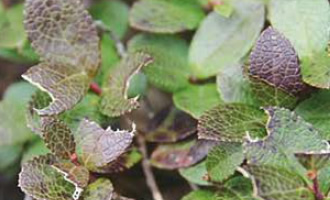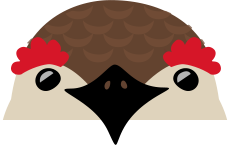
Changing diet
Rock ptarmigans generally feed on plants. Perhaps because of the harsh environment, they have adapted to eat many different parts of plants, including flowers, buds, berries & fruit, seeds, leaves and stalks. While many birds in Japan are herbivores, it is extremely rare to find species which eat plant stalks. Studies in the Tateyama environment have documented rock ptarmigans feeding on at least 69 different species from 25 different plant families. By matching this data with that from other regions, a total list reveals that rock ptarmigans feed on over 136 plant species from 41 families, including 21 species from the heather family, 14 species from the rose family, and 10 species from the asteraceae family.
Besides plants, rock ptarmigans also feed on flies and moths found on the snow from spring to early summer, and can be seen preying on ants, spiders and grasshoppers during summer until the beginning of autumn.
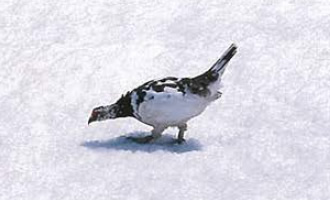

Main food sources for rock ptarmigans in the Tateyama area change with the seasons. In the spring, low-growing evergreens such as black crowberry and Aleutian mountainheath, as well as winter buds of rowans and alders are an important source of food. While nesting, adults mainly eat leaves, buds and flowers of the buttercup, rose and heather families. Around the time that young birds begin to leave the nest, many alpine plants are flowering, and rock ptarmigans eat almost anything that they come across.
As young birds grow, they begin finding more food in ravines, including plants of the celery, parsley, and polygonaceae families. Among these, they seem to particularly like seeds of plants from the sedge family, including Peucedanum multivittatum and Carex blepharicarpa. As the end of the summer season approaches, they feed on berries of the black crowberry and northern bilberry. During early autumn, they feast on seeds of species of true grasses such as tufted hairgrass. During late autumn through early winter, their diet is limited to plants tall enough to rise above the early snows; even the tough-looking leaves of Gaultheria pyroloides and other shrubs are a source of food.
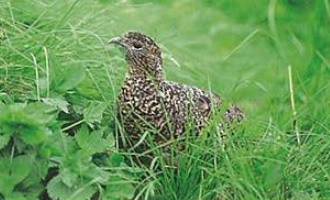
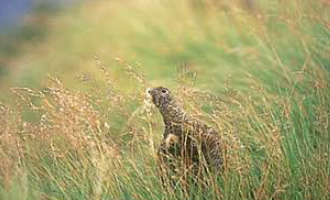
As the harsh winter comes to the mountains, most plants are buried under deep snows, and precious little food is exposed. In a few places around Murododaira, strong winds leave plants like black crowberry, Aleutian mountainheath, and cowberry exposed. Rock ptarmigans hungrily eat the leaves and needles of these plants whenever possible, but due to their limited amount and frequent disappearance under the snow, they are not a reliable food source. It seems that many rock ptarmigans feed mainly on winter buds of birch and other plants which are exposed along the steep banks of the Shomyo gorge.
